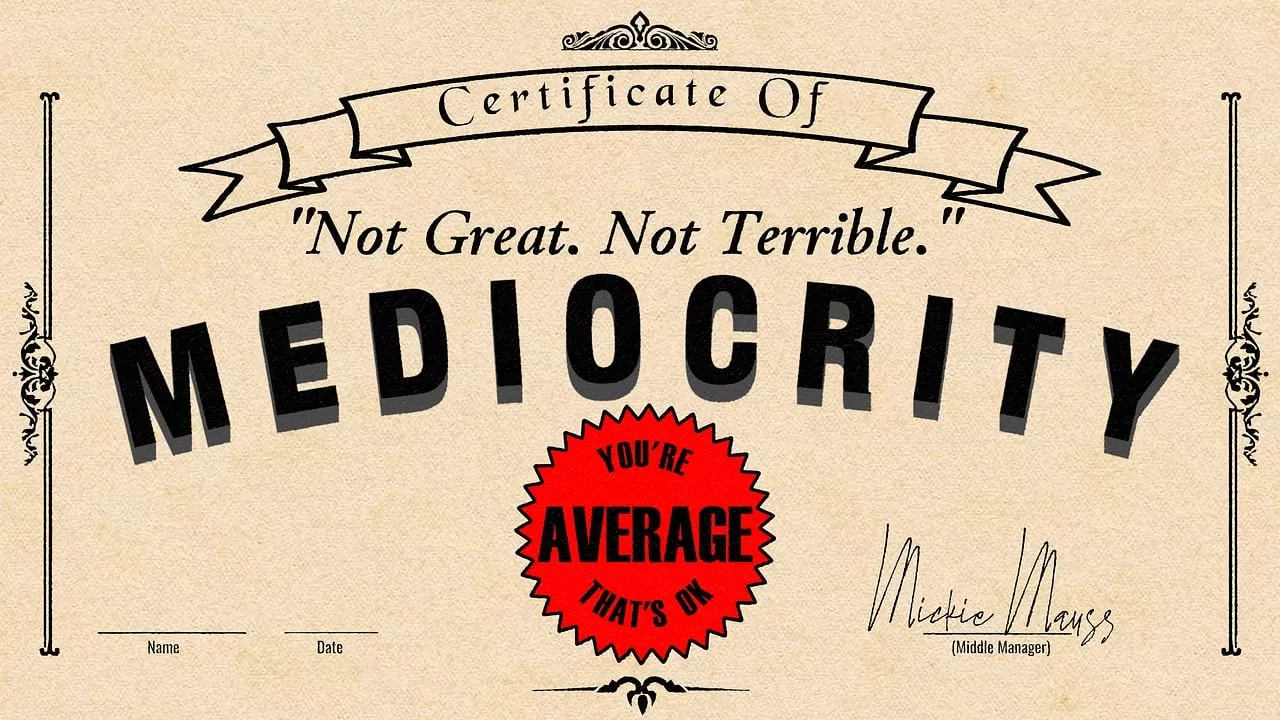Most people think of mediocrity as passive – soft, sluggish, and ‘middling’ – just ‘average.’ No real harm to anyone.
They’re wrong.
Mediocrity is active. It recruits. It builds coalitions. It spreads. Like an aggressive virus that doesn’t just infect individuals – it transforms entire organizational cultures, one compromise at a time.
The Anatomy of Infection
Unlike a biological virus that attacks the body, the mediocrity virus attacks something far more valuable: standards. It doesn’t announce itself with symptoms you can easily spot. Instead, it whispers sweet justifications that sound perfectly reasonable in the moment.
“We’re all doing our best.” “Perfect is the enemy of good.” “Let’s be realistic about expectations.”
These aren’t necessarily wrong statements. But when they become the default response to substandard work, they become the first signs of infection.
Stage 1: Localized Outbreak
Infection begins small. First, one person starts cutting corners. Turning in half-finished work, missing deadlines without consequence. Instead of accountability, they get cover.
“Everyone’s busy.” “Times are challenging.” “At least they’re trying.”
The language of excuse-making becomes normalized. What should be isolated incidents of poor performance become patterns that get rationalized away. The first carrier of the mediocrity virus isn’t necessarily a bad person – they might be overwhelmed, undertrained, or dealing with personal issues. But without intervention, they become patient zero in an organizational epidemic.
The critical moment comes when leadership faces a choice: address the declining standards or accommodate them. When accommodation wins, the virus finds its first foothold.
Stage 2: Pre-Epidemic Phase
Then two people are cutting corners. Then four. Deadlines get kicked into the long grass. Excuses for poor performance pile up like kindling waiting for a match.
Soon, the people who aren’t cutting corners become the problem.
“Why work so hard? You make us look bad.”
This is where the virus reveals its most insidious characteristic: it doesn’t just lower performance – it actively punishes excellence. High performers start feeling pressure to dial it back, not from management, but from peers who’ve embraced the new normal.
Peer pressure forces talent to conform. Productivity drops, and “good enough” becomes the actual standard, even if it’s not the stated one. The best employees don’t leave because they’re unhappy with their work – they leave because they’re unwelcome in an environment that treats their standards as threatening.
The mediocre remain, entrenching themselves deeper, building informal networks that protect and promote their approach to work.
Stage 3: Full Epidemic
Mediocrity shifts into aggressive infection mode, spreading from team to team, department to department, floor to floor. What started as individual performance issues has become a systematic rewriting of organizational DNA.
Underperformers form cliques of resentment, actively sabotaging those who still care about excellence. They lobby for shorter hours, “flexible” schedules that prioritize comfort over results, and reduced accountability measures. HR begins hiring based on cultural fit – meaning fit with the new mediocre culture – rather than merit or capability.
Performance reviews get gutted to avoid “creating unfair pressure.” The organization now actively rewards conformity and work avoidance. Bureaucracy becomes weaponized, with processes designed not to improve outcomes but to shield underperformers from consequences.
The mediocre cover for each other in an elaborate protection racket. Middle managers, infected themselves or simply overwhelmed, learn to conceal incompetence rather than address it. Documentation disappears. Standards become “suggestions.” Accountability becomes a dirty word.
The result? Organizational death.
Not the quick death of a catastrophic failure, but the slow strangulation of an entity that can no longer fulfill its purpose because it has forgotten what that purpose was.
Why Traditional Management Fails
Companies fail to stop the mediocrity virus because they treat it like a management problem instead of recognizing it as a cultural epidemic. They try to solve it with new processes, additional training, or reorganization – essentially rearranging deck chairs on a sinking ship.
The virus doesn’t respond to management techniques because it has already redefined what management means. In an infected organization, “good management” becomes keeping people comfortable rather than keeping them accountable.
The Immunity Protocol
Excellence doesn’t happen by accident. It happens by design – when you have clear standards, clear consequences, and leaders brave enough to defend both.
Building immunity to the mediocrity virus requires:
Diagnostic Clarity: Know what excellent work looks like in concrete, measurable terms. Vague standards are the perfect breeding ground for the virus.
Early Intervention: Address performance issues immediately, before they can spread. The longer you wait, the more expensive and difficult treatment becomes.
Cultural Antibodies: Celebrate and protect high performers. Make excellence socially rewarding rather than socially awkward.
Leadership Courage: Be willing to have difficult conversations and make unpopular decisions. The virus thrives on conflict avoidance.
System Design: Create processes that naturally reward excellence and surface mediocrity rather than hiding it.
The Choice Every Organization Faces
Mediocrity doesn’t kill teams quickly. It kills them quietly, one small compromise at a time. And the graveyard of business is full of companies that died being reasonable.
The choice isn’t between being harsh and being kind. It’s between being clear and being vague. Between holding standards and abandoning them. Between building something excellent and accepting something adequate.
Because in the end, adequate isn’t neutral. In a competitive world, adequate is another word for dying.
The mediocrity virus is always present, always looking for an opportunity to spread. The only question is whether your organization will develop immunity – or become another casualty in its quiet epidemic.
What stage of infection have you seen in organizations you’ve worked with? The early warning signs are easier to spot when you know what to look for.





